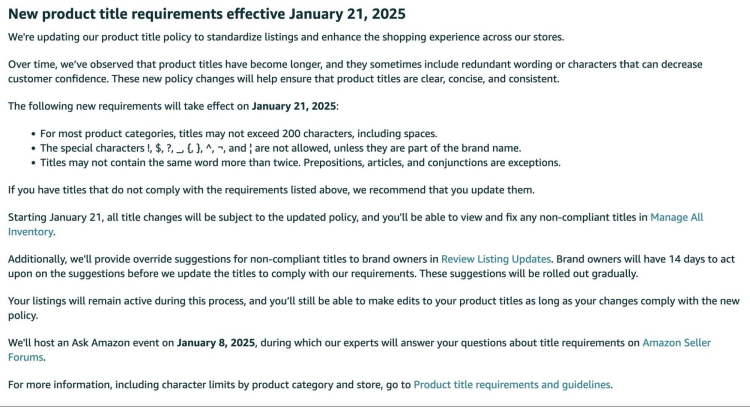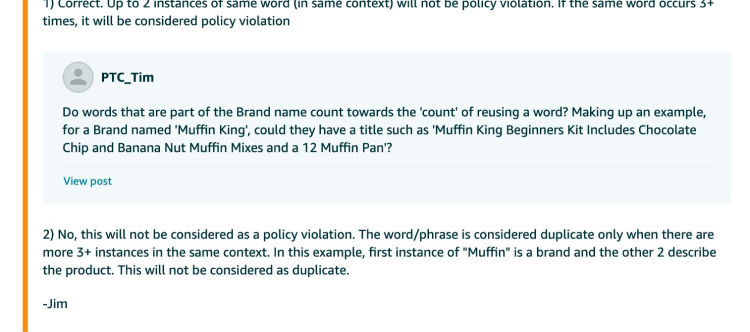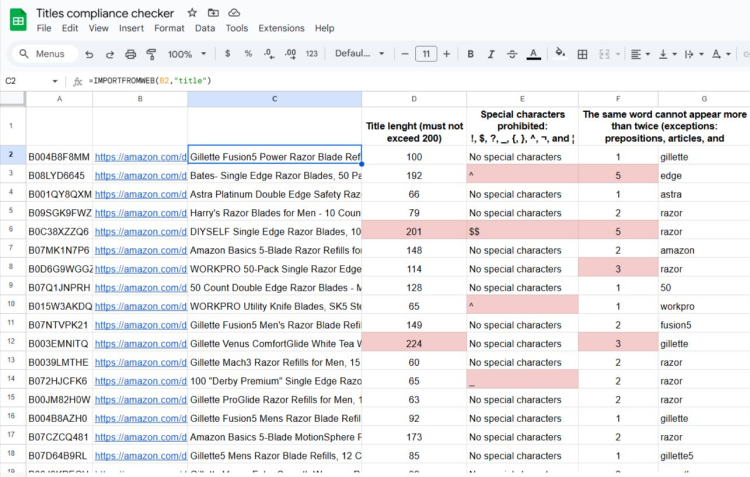Listen to This Article
Starting January 21, 2025, Amazon will introduce new product title requirements to enhance clarity, improve the shopping experience, and align listings with updated guidelines.
This change is part of Amazon’s broader efforts to standardize its platform, much like the bullet point updates from last year. Though similar restrictions were already in place in some categories, this update applies to all listings, regardless of category.
While Amazon believes that these changes will help create cleaner, more concise titles that will better serve customers, they also pose challenges for sellers who must balance compliance with maintaining visibility and conversions.
Key Updates to Product Titles
Amazon’s updated requirements will bring several meaningful changes:
- Titles cannot exceed 200 characters, including spaces.
- Special characters like !, $, {}, and ? are prohibited unless part of a brand name.
- Repeating the same word more than twice is no longer allowed (exceptions exist for prepositions, conjunctions, and articles).
If a title doesn’t meet these standards, Amazon will suggest changes through the Review Listing Updates tab in Seller Central. Sellers will have 14 days to act on these recommendations before Amazon enforces updates automatically. Listings will remain active during the process, but losing control over titles can feel like a compromise in seller autonomy.
Here is the complete announcement in Seller Central on the new Amazon product title requirements:

Joshua Rawe, Co-Founder of AmpliSell confirmed on LinkedIn that repeating words beyond prepositions are permitted as long as the instances of the word are limited to (1) per brand name and (1) per description:

So, while best practices often suggest not “using the word in the definition of the word, in this case, it is acceptable to use an element of your brand/product name in your product title/description.
Want to elevate your Amazon listings? SellerAssist by Carbon6 creates stunning A+ content, videos, and a polished Brand Storefront that drives real results.
Why Product Titles Are Critical
Product titles play a central role in Amazon’s ecosystem, influencing everything from visibility to sales. Optimizing your titles is equally important to maximizing performance as it is to maintaining compliance.
Search Engine Optimization (SEO)
Amazon’s A9 search algorithm prioritizes keywords in product titles. Including relevant keywords early in the title can significantly boost discoverability, helping customers find your products more easily. Studies have shown that keywords in titles have a stronger impact on sales than those placed in bullet points or descriptions.
First Impressions and CTR
The product title is often the first thing a customer sees. A clear, concise, and compelling title immediately communicates key features, benefits, and use cases, persuading shoppers to click on your listing. Cleaner titles not only build trust but also improve click-through rates (CTR), especially in Sponsored Brand ads, where keyword stuffing can backfire.
Conversion Rates and Differentiation
Once a customer clicks, the title continues to influence their decision to buy. Optimized titles that answer critical questions—such as what the product is, its features, and its purpose—can drive higher conversion rates. Additionally, well-crafted titles highlight unique selling points, helping your products stand out in a crowded marketplace.
How to Optimize Amazon Product Titles for 2025
With the new rules in place, sellers need to go beyond compliance to ensure their titles perform. Here’s how:
- Include Relevant Keywords
Conduct thorough keyword research to identify search terms your customers use. Place the most important keywords at the beginning of the title for maximum impact. Incorporate synonyms and alternative terms where possible to broaden reach, but avoid overloading the title. - Be Descriptive but Concise
Provide essential details like brand name, product type, size, color, and key features while avoiding unnecessary words or phrases like “best seller.” While Amazon allows 200 characters, community insights suggest staying under 150 characters often delivers better results. - Focus on User Intent
Understand what your customers are searching for and their intent. Write titles that highlight benefits or use cases that resonate with your audience, such as durability, comfort, or practicality. - Follow Formatting Guidelines
Capitalize the first letter of major words, use numerals for numbers, and spell out measurement units unless otherwise specified by Amazon. Proper formatting not only ensures compliance but also builds trust with customers. - Test and Optimize
Use tools like Amazon’s “Manage Experiments” feature to test variations of your titles. Small changes, such as rearranging keywords or improving readability, can significantly impact CTR and conversion rates. - Balance SEO and Readability
Keywords are vital, but readability is just as important. Titles that feel natural and human-friendly perform better, particularly in building trust with shoppers. Striking the right balance between SEO and readability is key to success.
To ensure compliance with the latest Amazon title requirements, we recommend using this title compliance checker from NoDataNoBusiness, released January 2025:

Conclusion: Refinement is Key
While the new Amazon title requirements may feel restrictive, they also present an opportunity to refine your approach. Cleaner, more concise titles not only improve customer trust but also drive CTR and conversions. Sellers who adapt quickly and strategically—by optimizing for both customers and Amazon’s algorithm—will be best positioned to thrive under the new rules.
With the January 21 deadline fast approaching, now is the time to audit your listings, refine your titles, and ensure compliance. Remember, a well-crafted title is more than a label; it’s your product’s first impression and a major factor in your success on Amazon.








